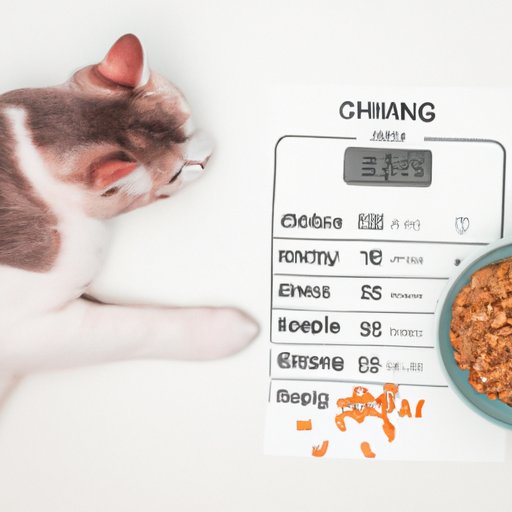
I. Introduction
As cat owners, we want the best for our feline friends, and a healthy weight is crucial for their overall well-being. However, some cats may struggle to put on weight, which can be a cause for concern. In this article, we will explore ways to help your underweight cat gain weight.
II. Feeding Schedule
Setting a regular feeding schedule is an important factor in helping underweight cats gain weight. It not only establishes a routine for your cat but ensures that they are receiving proper nutrition at consistent times. According to experts, cats should be fed at least twice a day, with meals spaced approximately eight to twelve hours apart.
It is best to create a feeding schedule that works well with your cat’s lifestyle and your own. Be sure to stick to the feeding times as closely as possible to avoid over or underfeeding your cat.
Another essential tip is to avoid free-feeding your cat, which allows them to eat all day long. Free feeding may lead to overeating, obesity, or cause your cat to lose interest in food, further exacerbating their weight problem.
III. Nutritional Value
Not all cat foods are created equal, and it is crucial to choose the appropriate high-calorie food for your underweight cat. Experts suggest selecting dry and wet foods appropriately to maximize calorie intake.
Wet food has a higher moisture content and is more palatable for a cat, making it easier for them to consume the nutrients they require. Conversely, dry food is more calorie-dense, which makes it an excellent choice for cats that need to gain weight. As such, combining dry and wet food is the best way to maximize the nutritional value that your cat receives.
When selecting food, check for high fat, protein, and calorie content. Some high-quality food formulas are created explicitly for cats with weight problems, so be sure to verify before making a purchase.
IV. Snacks
Offering snacks is a helpful way to provide extra calories for a cat trying to gain weight. However, it’s essential to offer treats made from high-quality foods and avoid those with added sugars. Small treats like cooked chicken or turkey, hard-boiled eggs, steamed fish, are all excellent options that provide high-quality protein. Similarly, if you want to offer commercial snacks, look for those specially formulated for underweight cats.
V. Variety
Variety is the spice of life, and this holds for our cats too. Just like humans, cats can quickly tire of monotonous diets and lose interest in food. Mixing up the flavors and textures of wet and dry food that you offer your cat can significantly stimulate their appetite.
If you have been feeding the same brand of cat food to your feline friend, consider introducing some variety. Additionally, the benefits of rotating your cat’s diet and giving them different brands of food are that you expose them to different nutritional balances that could help address their weight gain issues.
VI. Vet Consultation
If your cat is underweight and you have tried several methods and failed to produce results within a reasonable period, it is time to consult with a qualified veterinarian. It’s important to prepare for the vet visit. Make a note of all of the symptoms you’ve observed in your cat, their feeding habits, food intake, and any other concerns you may have.
Your vet will likely perform a comprehensive physical exam on your cat and ask about their symptoms to determine the underlying problem. Common health conditions that could cause weight loss in cats include kidney disease, diabetes, hyperthyroidism, and cancer. The vet will also offer guidance on the best approach to help your underweight cat gain weight.
VII. Conclusion
Helping an underweight cat gain weight can take time and patience, but don’t lose hope. With the right feeding schedule, diet, treat selection, and veterinary guidance, you can help your feline friend return to optimal health and weight.




